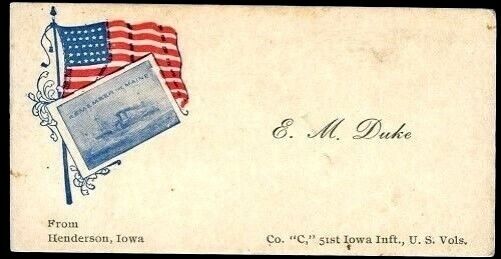-40%
ORIGINAL PRELIMINARY DESIGNS 10" GUN TURRET MOUNTS U.S.S. AMPHITRITE & MONADNOCK
$ 789.35
- Description
- Size Guide
Description
These arethe original
Preliminary Designs for the 10" Turret Mount , for Monitors Amphitrite (BM-2) and Monadnock (BM-3), Bureau of Ordinance Oct. 28th, 1889, approved by Montgomery Sicard, Chief of Bureau.
The first Monitor of the Amphirite Class Ships built for the United States Navy Post Civil War and prior to the Spanish American War was the U.S.S. Amphitrite. The second was the U.S.S. Monadnock.
Montgomery Sicard
was appointed acting-midshipman on October 1, 1851 and was an officer for the USN
during the Civil War. He received
his commission as Lieutenant Commander July 1862. After the war he
became an instructor at the Naval Academy from 1866–1868. Sicard was promoted to Commander in 1870 and commanded a number of ships in later years.
Sicard was promoted and served as Chief of the Bureau of Ordnance for the USN from 1881 to 1890. During that period, he was responsible for the Ordnance of all U.S.N. Battleships nearly all of which were used in the Spanish American War.
One of these battleships was the Miatonomoh (BM-5). Although the ship was launched in 1876, she was not commissioned until 1882 which at that time she was still incomplete.
She was decommissioned 13 March 1883. and then recommissioned as a "New Navy Monitor" 27 October 1891. Ironically, Montgomery Sicard was promoted to Captain and took command of the ship.
There is much history behind this Photo Litho and more still yet to be found. The litho measures 11 1/2" x 11 5/8". It is the top view or Sectional Elevation of the 10" guns and turret mounts for the Battleship Monitors BM-2 and BM-3.
The condition of the document is displayed in the clear, enlarged photos. There is minimal wrinkling to the lower left corner and a small 1" tear as shown in the last photo.
This is one of the most significant Amphitrite Class preliminary designs known to legally exist in private collector hands. I am not aware that are any others existing unless there might be one in the U.S.N. archives or a Museum somewhere. It is one of several other preliminary designs that were approved by W. Sicard, U.S. Navy Chief of Bureau of Ordinance in 1889. This is the original photo litho for the 10" guns that were manufactured, assembled and installed on the the BM-2 and the BM3. The U.S.S. Maine also had 10" guns but were of slightly different design. Bureau of Ordnance photo lithos used in the field usually have a characteristic green color code stamp for that department (see photo #6). There were smaller photo lithos made but they are reproductions of the original designs and do not carry the approval box. The smaller lithos were published in books as training material at the US Naval Academy in Maryland.
This document is Guaranteed Original and is a major Historical document of early U.S. History and of the USN.
Provenance of this Original Preliminary Design is provided by the following documents, preliminary designs and other historical lithographed blueprints obtained by the same estate sale:
Propelling machinery of 9000 I.H.P. 6600 Ton Armored Cruiser U.S.S. MAINE
General Arrangements in Engine Rooms & Shaft alleys. Dated
December 5th, 1887 with original Lithographed signature of
George Wallace Melville, Engineer-in Chief U.S.N.
Several other blueprints of Gun turrets and machinery that include those of the
U.S.S. MAINE with original lithographed signatures of
W. Sicard, Bureau Chief U.S.N.
Propelling machinery of 1300 I.H.P. of about 800 tons Displacement for PRACTICE VESSEL
dated AUG 15, 1889
Propelling Machinery of 3000 I.H.P. for U.S.S. MONADOCK
BOILERS
with original Lithographed signature of George Wallace Melville, Engineer-in Chief U.S.N. dated Sept. 20th, 1888
And about 20 additional photo lithos (blueprints) of various practice vessels, whale boats, engines, boilers and machinery. All dated
1887 through 18
8
9. Almost
all preliminary designs or lithographed blueprints are signed by M. Sicard of the Bureau of Ordnance or Admiral Melville Bureau of Engineering with the U.S Navy Seal. This signifies the precedence of the original preliminary designs being auctioned.
All of the above ships were subsequently used in the Spanish American War. All of them are EXTREMELY RARE!
The
Amphitrite
class monitors
were a class of four U.S. Navy Monitors
ordered in the aftermath of the Virginius affair with Spain in 1873.
A fifth ship originally of the same design, USS Puritan (BM-1
)
was laid down in 1874, and later fitted with extra armor and designated as a unique class called the Puritan Class.
The Puritan
and the
Amphitrite
class were to remain under construction for an extraordinarily long period of time due both to design changes and to the reluctance of the U.S. Congress
to appropriate funds for their completion. Most of the vessels were only commissioned in the mid-1890s—more than twenty years after the commencement of construction.
They were eventually to see active service in the Spanish American War.
The
second USS
Amphitrite
—the lead ship in her class
of iron-hulled, twin-screw monitors —was laid down in 1874 at Wilmington, Delaware. Although she was launched on 7 June 1883, she was not commissioned until 23 April 1895.
Rapid changes in naval technology and doctrine during the two decades, she was under construction which had repeatedly delayed her progress, and she was redesigned twice while still under
construction.














